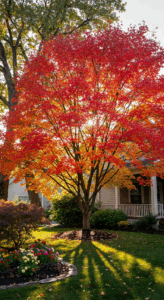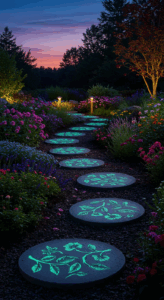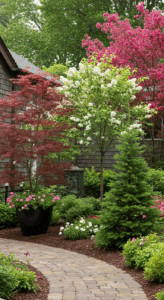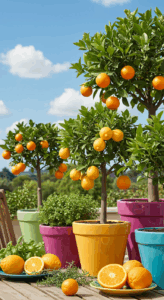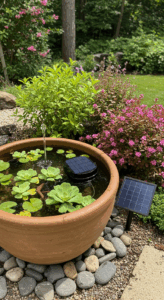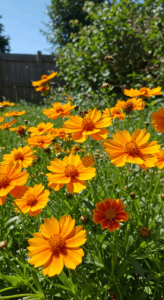1. Discover the Beauty of Small Trees: A Perfect Fit for Any Yard
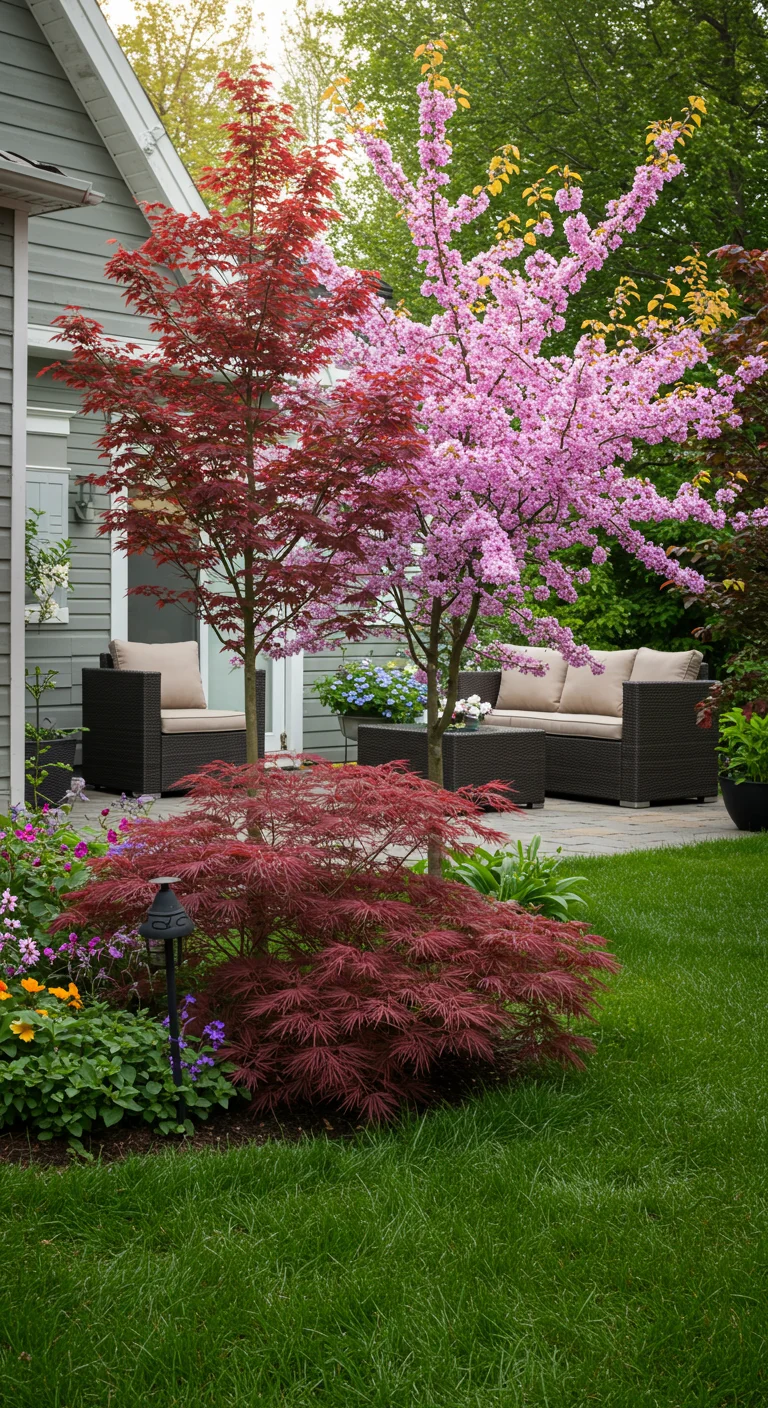
Small trees are an excellent addition to any yard, offering beauty and functionality without the invasive root systems that larger trees often present. These trees, typically ranging from 6 to 20 feet in height, provide shade and aesthetic appeal while minimizing the risk of damaging nearby structures or underground utilities. Ideal for smaller yards, patios, or as focal points in garden landscapes, small trees such as Japanese Maple, Redbud, and Serviceberry thrive in various climates and soil types. By selecting non-invasive species, homeowners can enjoy the benefits of greenery without the hassle of extensive maintenance or disruption to their landscaping. Incorporating these lovely trees can enhance curb appeal and create inviting outdoor spaces for relaxation and entertainment.
2. The Importance of Non-Invasive Roots: Why It Matters
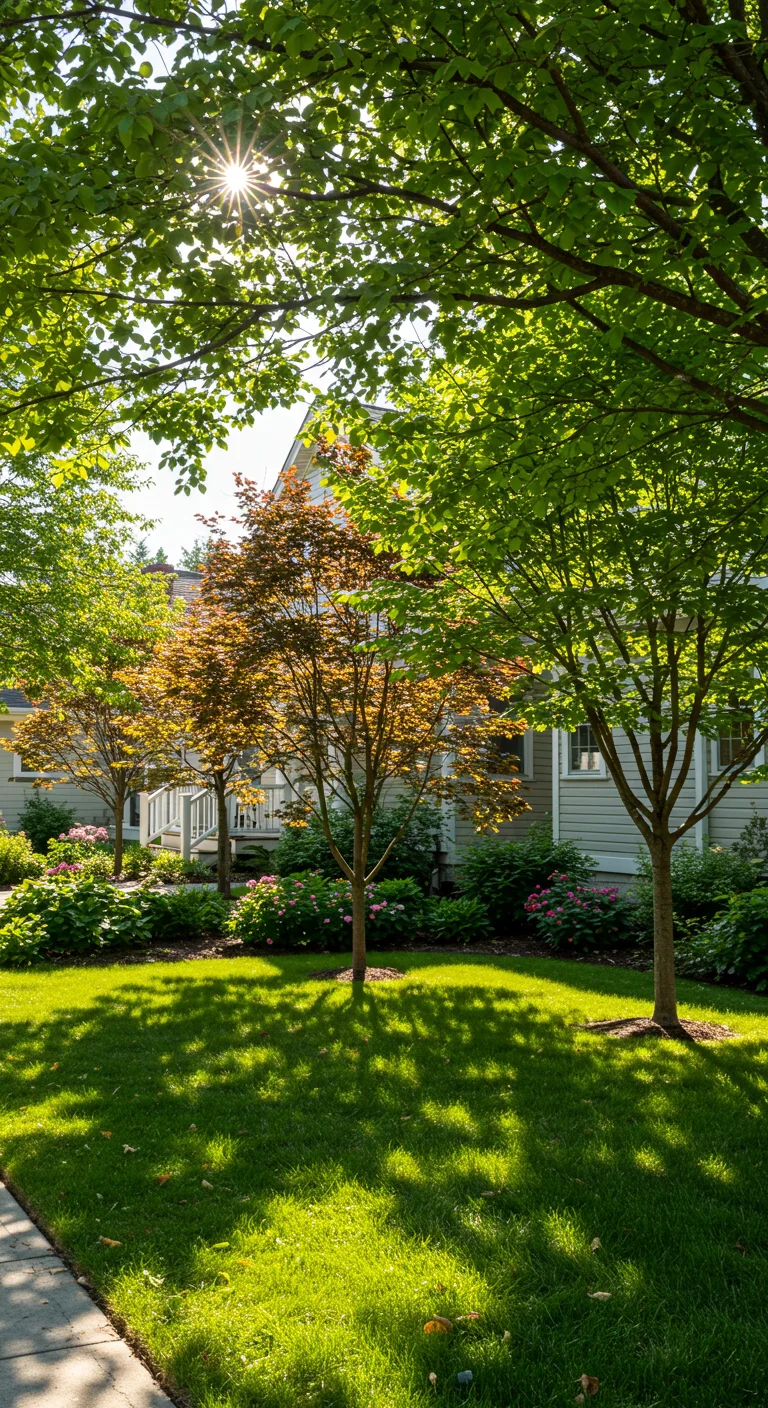
Non-invasive roots are crucial for maintaining the integrity of your landscape and ensuring harmony with surrounding structures. Trees with non-invasive root systems grow in a more controlled manner, minimizing the risk of damage to sidewalks, foundations, and underground utilities. This characteristic not only extends the lifespan of hardscapes but also reduces the need for costly repairs and maintenance. Moreover, such trees are often more suitable for small yards, allowing homeowners to enjoy the beauty of greenery without the worry of invasive roots disrupting their gardens or lawns. Choosing trees with non-invasive roots promotes a sustainable and aesthetically pleasing environment, making it an essential consideration for any landscaping project.
3. Japanese Maple: A Colorful Statement in Small Packages
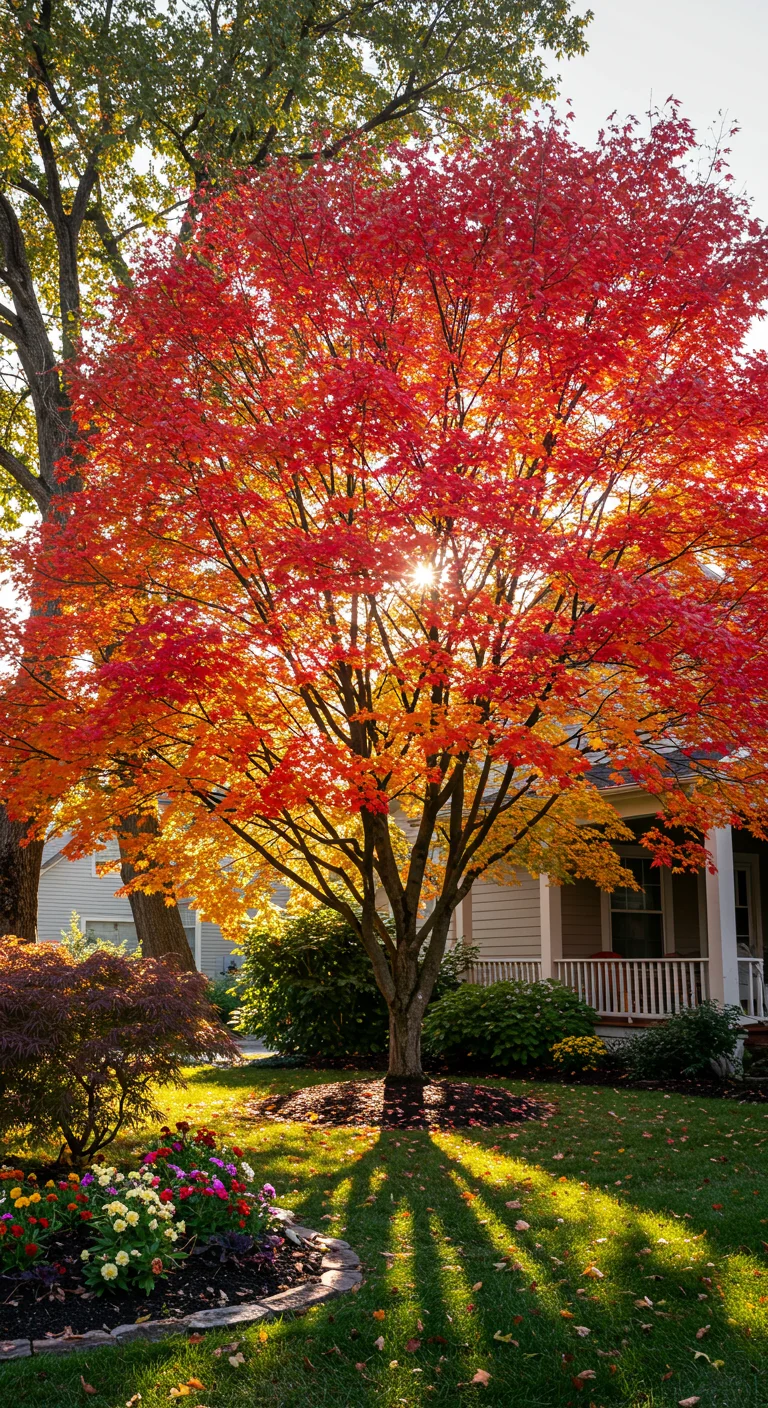
The Japanese Maple (Acer palmatum) is a stunning small tree that makes a colorful statement in any front or backyard. Known for its delicate, lobed leaves that can range from deep crimson to vibrant green, this tree provides year-round visual interest. With a mature height of 10 to 15 feet, it’s an ideal choice for compact spaces. Japanese Maples thrive in partial shade and well-drained soil, making them suitable for various climates. Their non-invasive root system ensures that they won’t disrupt nearby foundations or plumbing, allowing you to plant them close to your home or other structures. Incorporating this tree into your landscape can enhance the aesthetic appeal while offering a serene, tranquil atmosphere, especially in autumn when their foliage transforms into brilliant shades of orange and yellow.
4. Serviceberry: A Multi-Season Wonder for Your Landscape
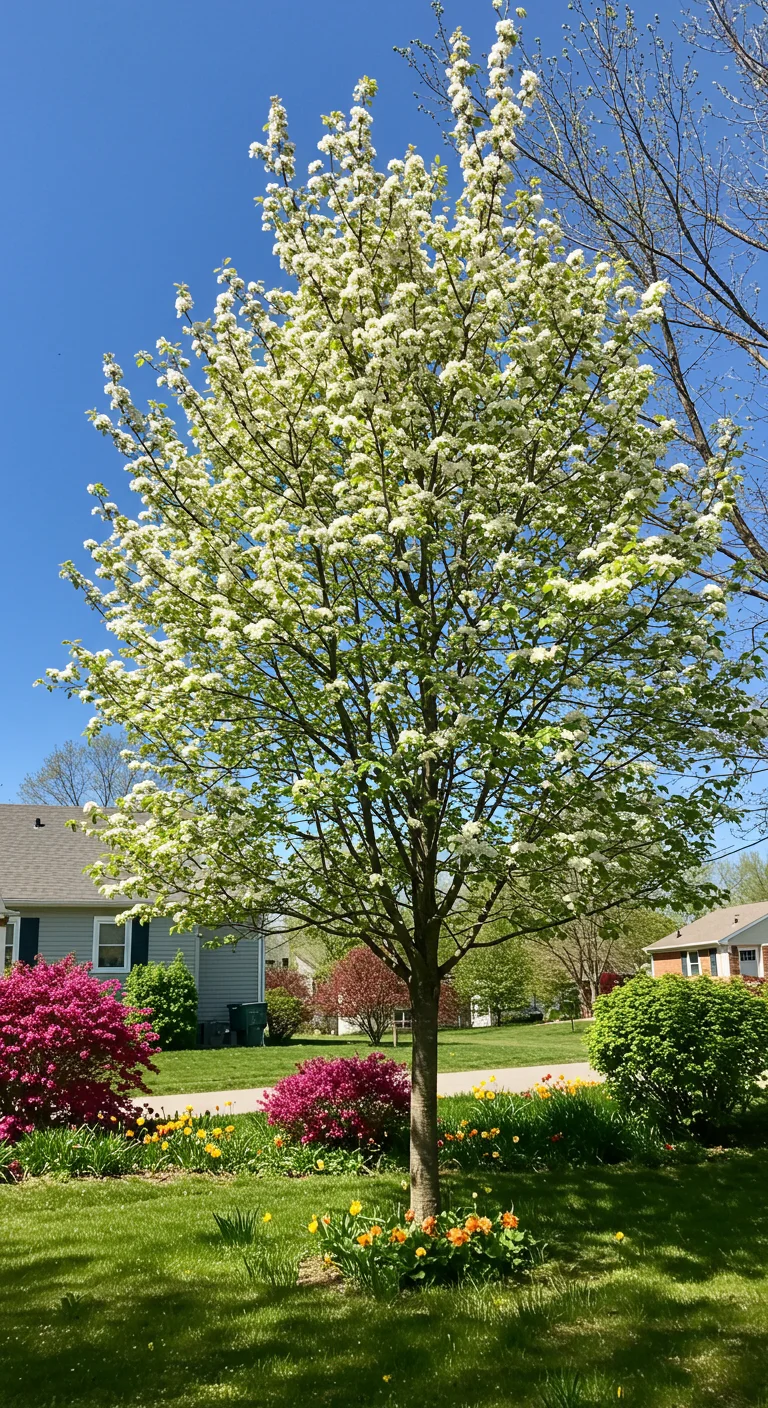
Serviceberry, also known as Amelanchier, is a stunning small tree that offers a beautiful display throughout the seasons, making it an excellent choice for your landscape. In spring, it dazzles with clusters of delicate white flowers, while summer brings a bounty of sweet, edible berries that can attract birds and other wildlife. As autumn arrives, the leaves transform into vibrant hues of orange and red, providing a striking contrast against the winter landscape where its slender branches create an elegant silhouette. Not only does the Serviceberry feature non-invasive roots, making it suitable for smaller yards, but it also thrives in various soil types and light conditions, ensuring a versatile addition to your garden. This low-maintenance tree is perfect for anyone looking to enhance their outdoor space with seasonal interest and ecological benefits.
5. Redbud: Heart-Shaped Leaves and Stunning Spring Blooms
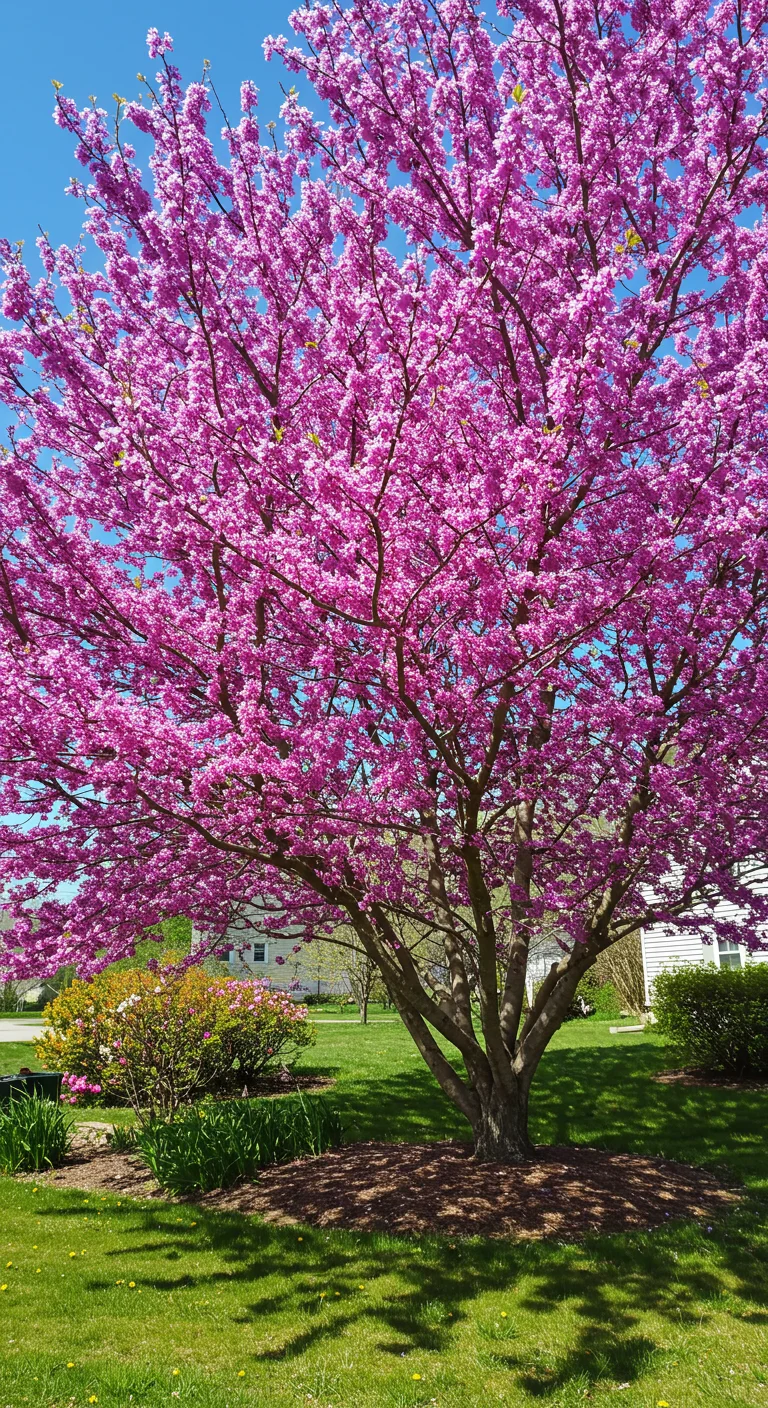
The Redbud tree (Cercis canadensis) is a popular choice for small gardens due to its heart-shaped leaves and breathtaking spring blooms. In early spring, the tree bursts into a spectacular display of pink to purple flowers that bloom directly on the branches, preceding the leaves. This unique characteristic makes it a showstopper in any landscape. Redbuds grow to a height of 20-30 feet and have a relatively shallow root system, making them non-invasive and perfect for front or backyard settings where space is limited. Additionally, their fall foliage turns a delightful yellow, providing year-round interest. They thrive in well-drained soil and prefer full sun to partial shade, making them versatile for various garden conditions. Regular pruning helps maintain their shape and encourages healthier growth.
6. Crape Myrtle: A Summer Showstopper with Minimal Fuss

Crape Myrtle (Lagerstroemia indica) is a stunning summer-flowering tree that thrives in a variety of soil conditions, making it an ideal choice for front yards or backyards. Known for its vibrant blooms in shades of pink, red, white, and purple, this small tree adds a striking visual appeal without the worry of invasive roots. Crape Myrtles are drought-tolerant once established, requiring minimal care beyond occasional pruning to enhance their shape and promote healthy growth. They also attract pollinators like bees and butterflies, making them a valuable addition to any garden. With their long-lasting flowers that bloom from late spring until fall, Crape Myrtles not only beautify your landscape but also provide seasonal interest throughout the summer months.
7. Flowering Dogwood: Graceful Beauty and Wildlife Attraction
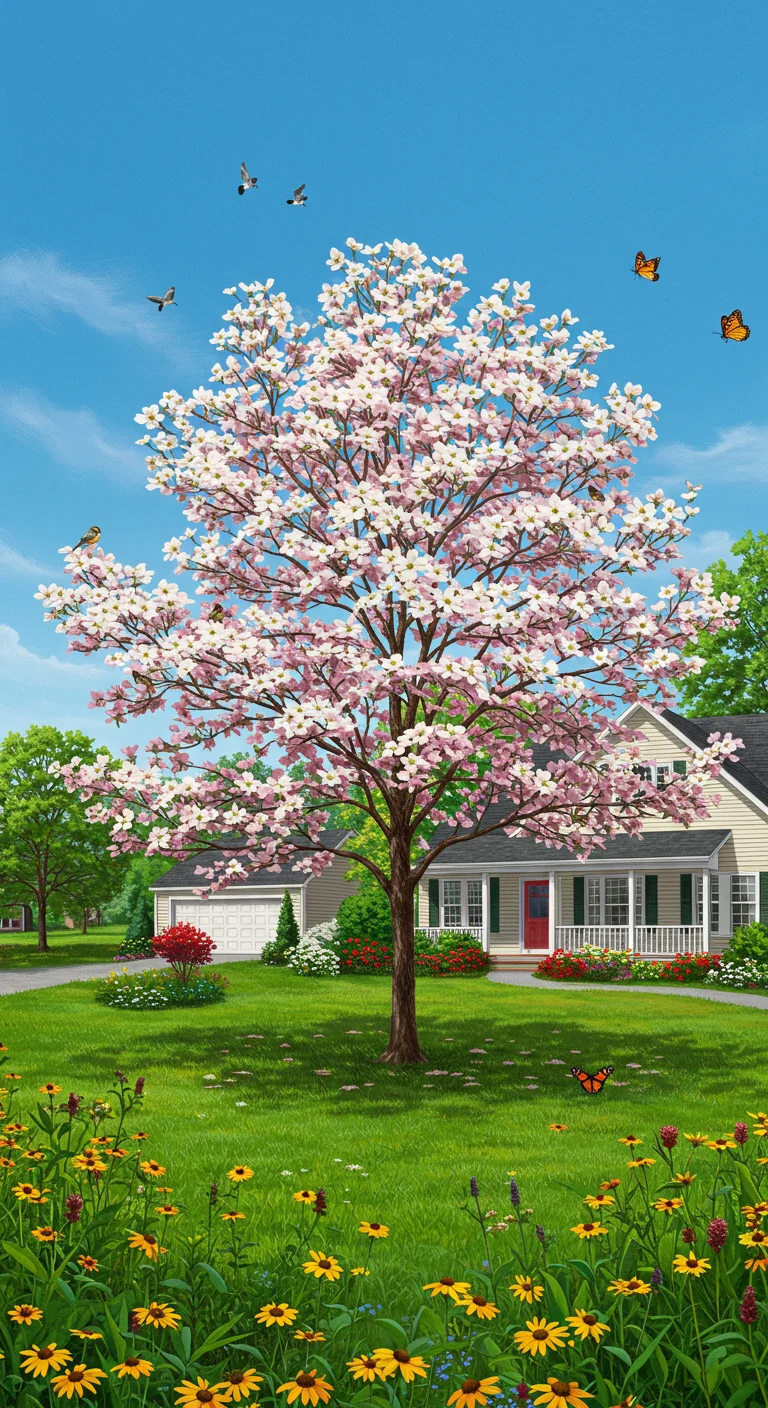
The Flowering Dogwood (Cornus florida) is a stunning small tree that brings elegance and charm to any front or backyard. Known for its beautiful, white or pink blooms that emerge in spring, it provides a visually striking focal point while attracting various wildlife, including pollinators like bees and butterflies. This tree typically reaches heights of 15 to 30 feet and has a non-invasive root system, making it an ideal choice for smaller spaces where other trees might pose a risk to nearby structures. Additionally, its vibrant red berries in the fall serve as food for birds, enhancing the ecological value of your garden. For those seeking a tree that combines aesthetic beauty with environmental benefits, the flowering dogwood is a perfect option.
8. Amur Maple: A Hardy Tree with Exceptional Fall Foliage
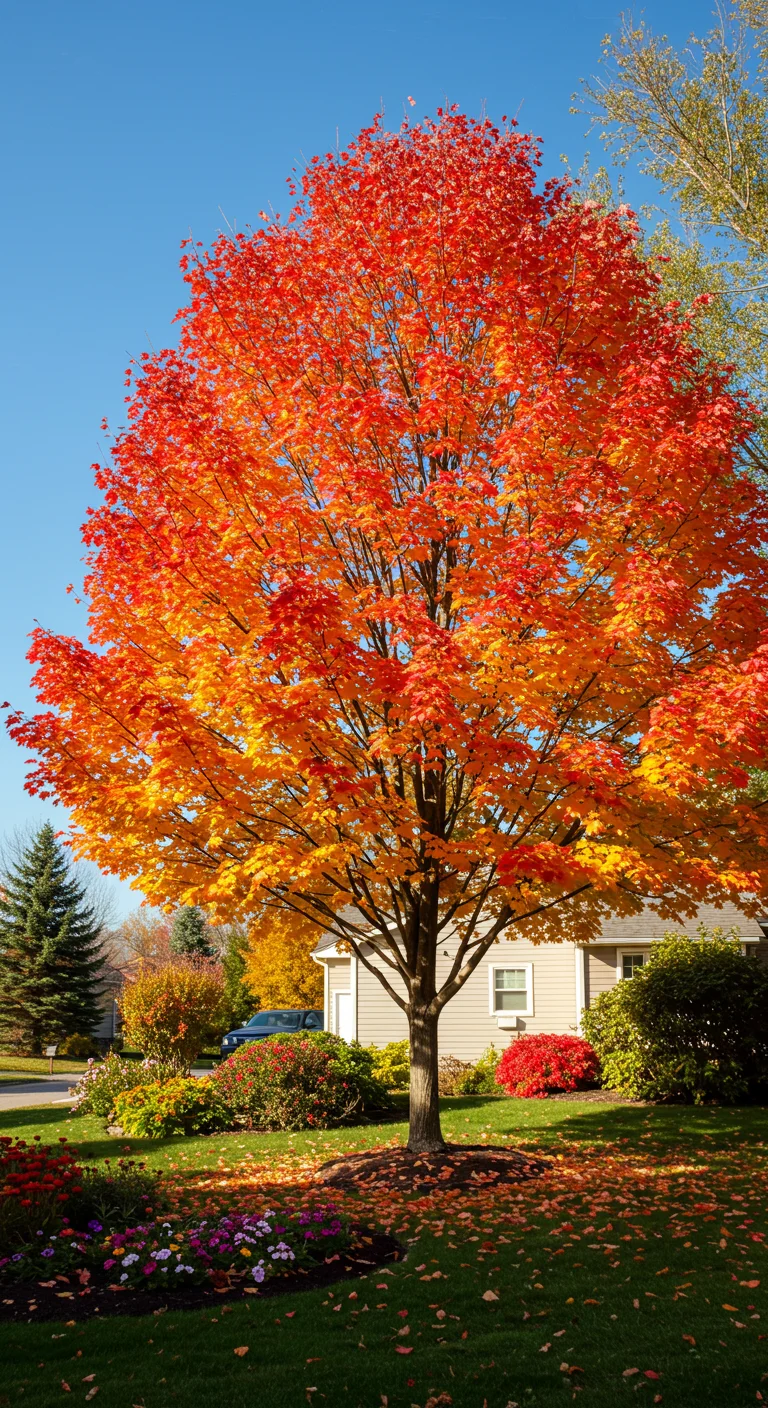
The Amur Maple (Acer ginnala) is a small, hardy tree that thrives in various climates, making it an excellent choice for both front and backyards. This deciduous tree typically reaches heights of 15 to 20 feet, and its non-invasive root system ensures it won’t disrupt nearby structures or gardens. One of its standout features is its stunning fall foliage, displaying vibrant shades of red, orange, and yellow that create a breathtaking autumn landscape. Additionally, the Amur Maple is drought-tolerant once established and requires minimal maintenance, making it a practical choice for homeowners seeking both beauty and functionality. Planting this tree can enhance the aesthetic appeal of your outdoor space while providing shade and habitat for local wildlife.
9. Smoketree: Unique Foliage and Dreamy Smoke-Like Blooms
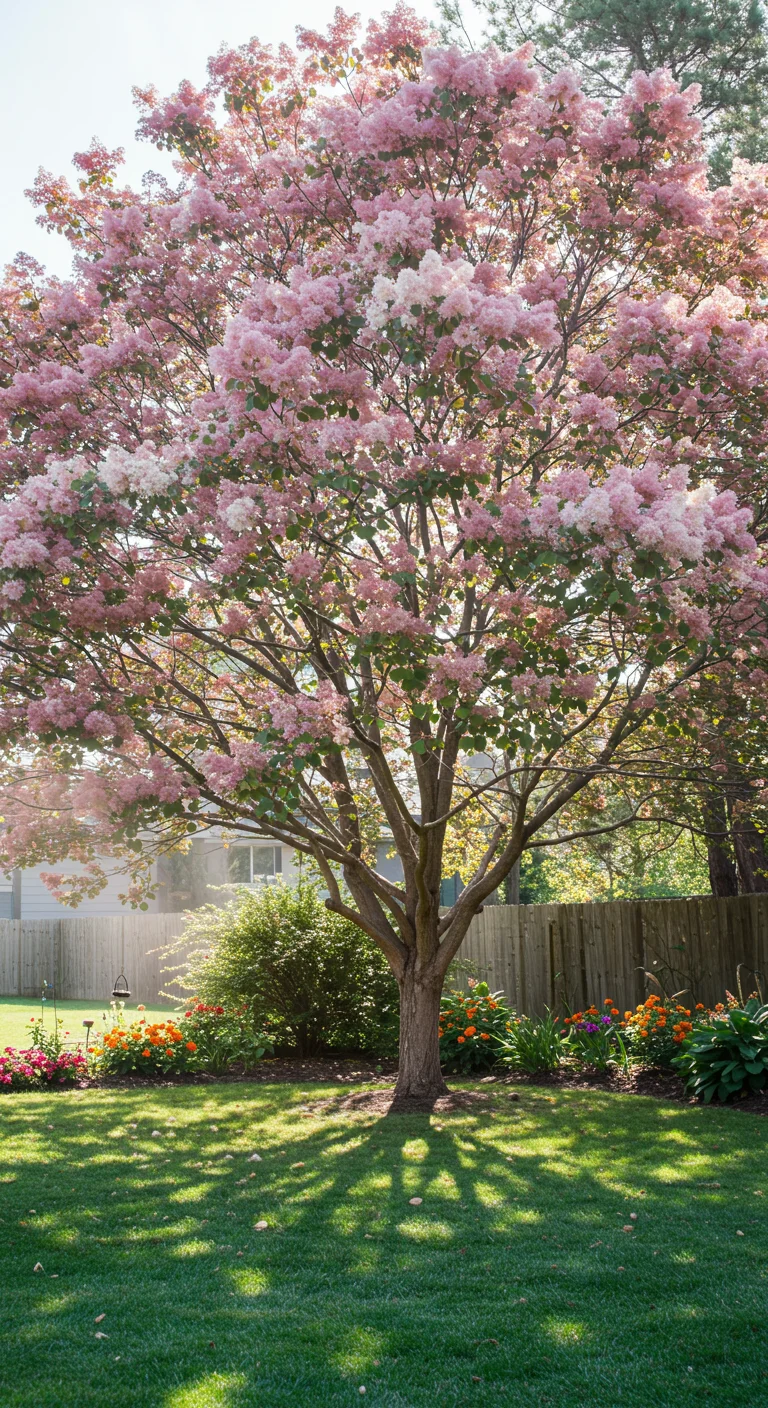
The Smoketree (Cotinus coggygria) is an exceptional choice for a small tree with non-invasive roots, making it a stunning addition to both front and backyards. Renowned for its unique foliage, the tree boasts vibrant leaves that can shift from green to deep purple or golden hues throughout the seasons. In late spring to early summer, it produces ethereal, smoke-like blooms that resemble fluffy puffs of pink or white cotton candy, creating a dreamy atmosphere in your garden. This adaptable tree thrives in various soil types and can tolerate drought, making it a low-maintenance option. Additionally, its compact size, generally reaching 10 to 15 feet in height, allows it to fit beautifully into smaller spaces while providing visual interest year-round.
10. Goldenchain Tree: A Dazzling Display of Yellow Flowers
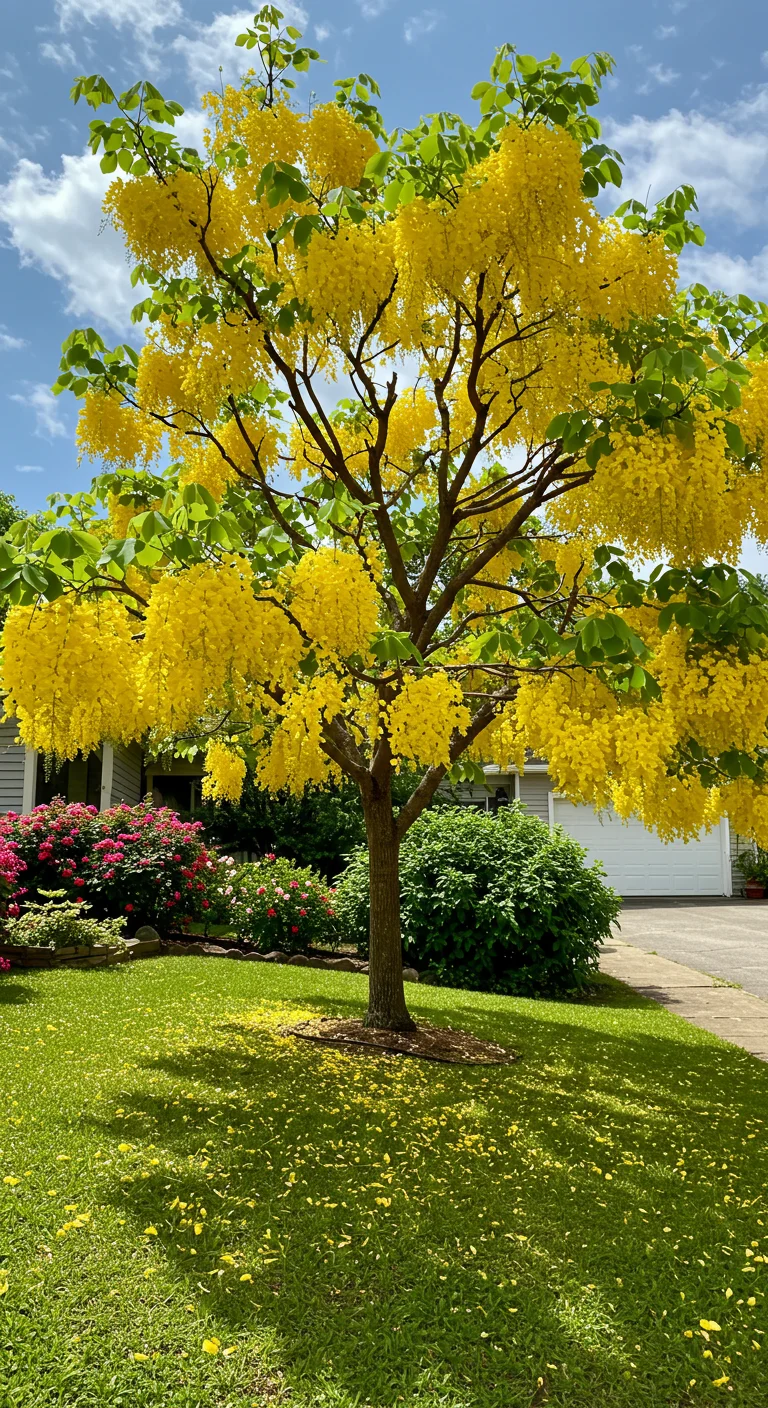
The Goldenchain Tree (Laburnum anagyroides) is a stunning small tree known for its breathtaking cascade of bright yellow flowers that bloom in late spring. This deciduous tree typically reaches a height of 20 to 30 feet, making it a perfect fit for smaller yards. Its non-invasive root system allows it to thrive without disrupting nearby plants, making it an ideal choice for front and backyards. The tree prefers well-drained soil and full sun to partial shade, and it is relatively low-maintenance, requiring minimal pruning. Additionally, the fragrant flowers attract pollinators like bees and butterflies, enhancing the biodiversity of your garden. However, be cautious, as all parts of the tree are toxic if ingested, so it’s best positioned away from areas frequented by pets and small children.
11. Magnolia: Timeless Elegance and Fragrant Blooms
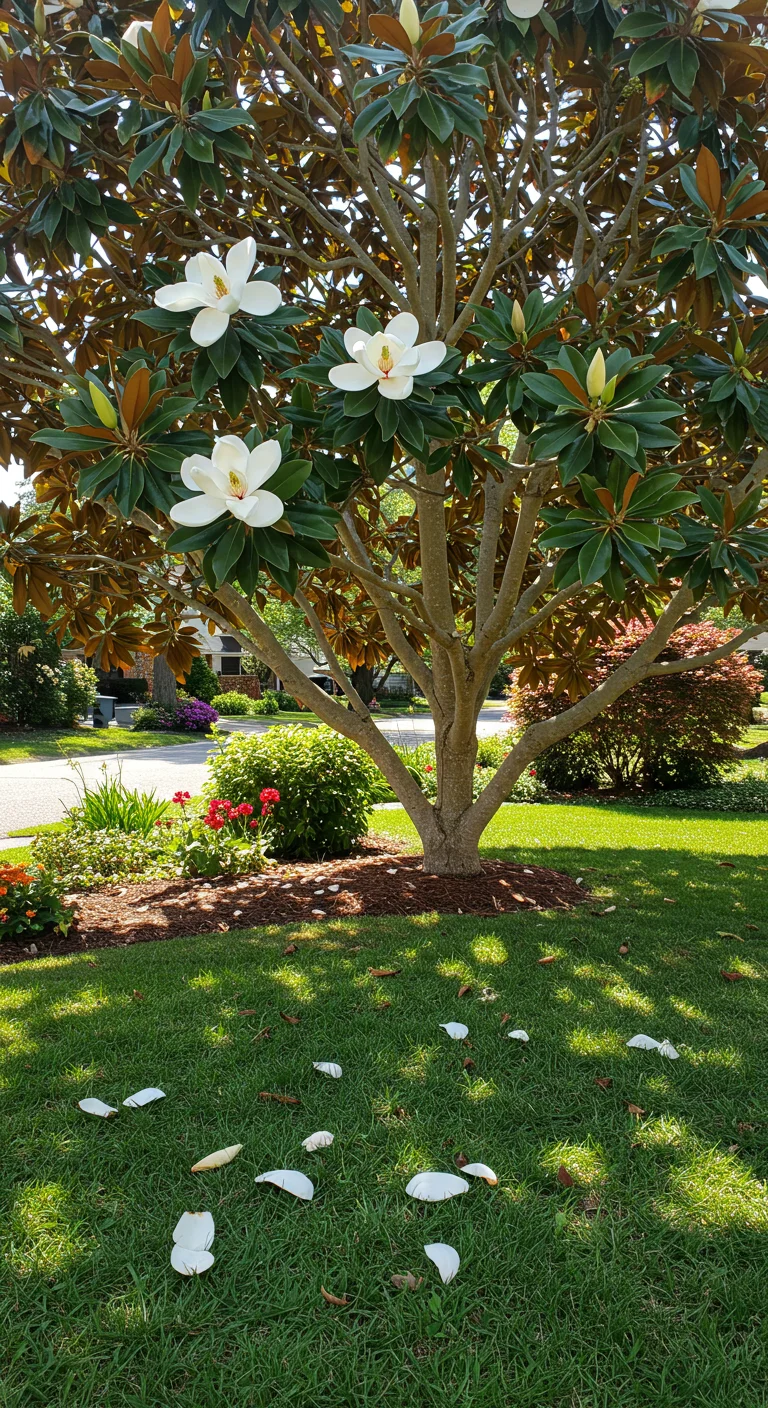
Magnolia trees are a stunning addition to any front yard or backyard, celebrated for their timeless elegance and fragrant blooms. With varieties such as the Southern Magnolia (Magnolia grandiflora) and the Star Magnolia (Magnolia stellata), these small trees typically reach heights of 15 to 30 feet and feature non-invasive roots, making them ideal for urban landscapes. Their large, waxy leaves provide year-round greenery, while their exquisite flowers—ranging from pure white to deep pink—bloom in spring, filling the air with a sweet, citrus-like fragrance. Moreover, magnolias thrive in well-drained soil and prefer full sun to partial shade, making them versatile plants that can adapt to various garden settings. Choose magnolias to enhance your outdoor space with beauty and aromatic allure without the worry of invasive root systems.
12. Dwarf Alberta Spruce: A Charming Conifer for Year-Round Interest
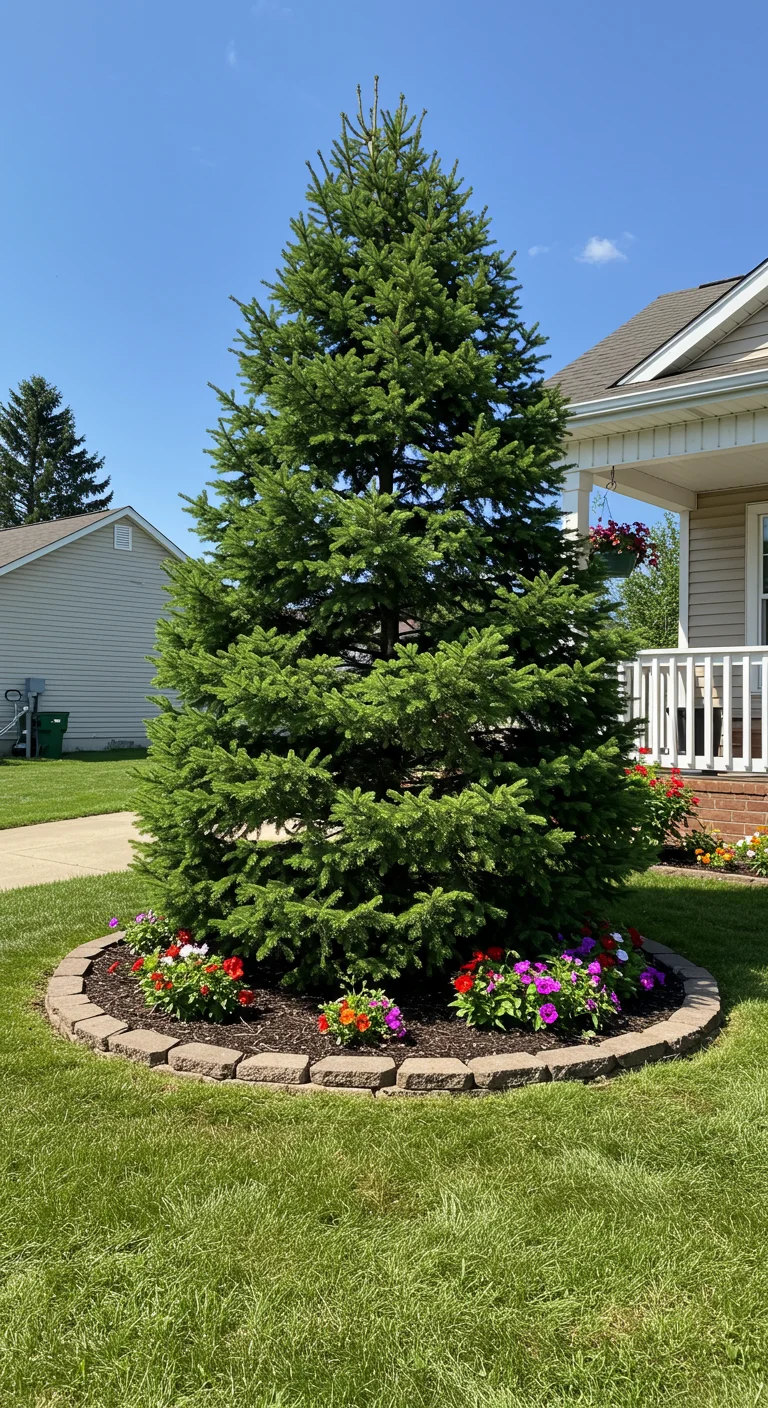
The Dwarf Alberta Spruce (Picea glauca ‘Conica’) is a compact, conical evergreen that brings year-round charm to any landscape. Growing slowly to a height of 3 to 6 feet, this conifer is ideal for small spaces, making it perfect for front yards or backyards where invasive root systems could be a concern. Its dense, symmetrical form and soft, needle-like foliage add texture and color throughout the seasons, showcasing a vibrant green in spring and summer, with a subtle golden hue in winter. This tree thrives in full sun to partial shade and is tolerant of various soil types, though it prefers well-drained conditions. Regular pruning can help maintain its shape, making it an excellent low-maintenance choice for homeowners seeking an attractive, non-invasive tree option.
13. Eastern Red Cedar: A Versatile Choice for Privacy and Beauty
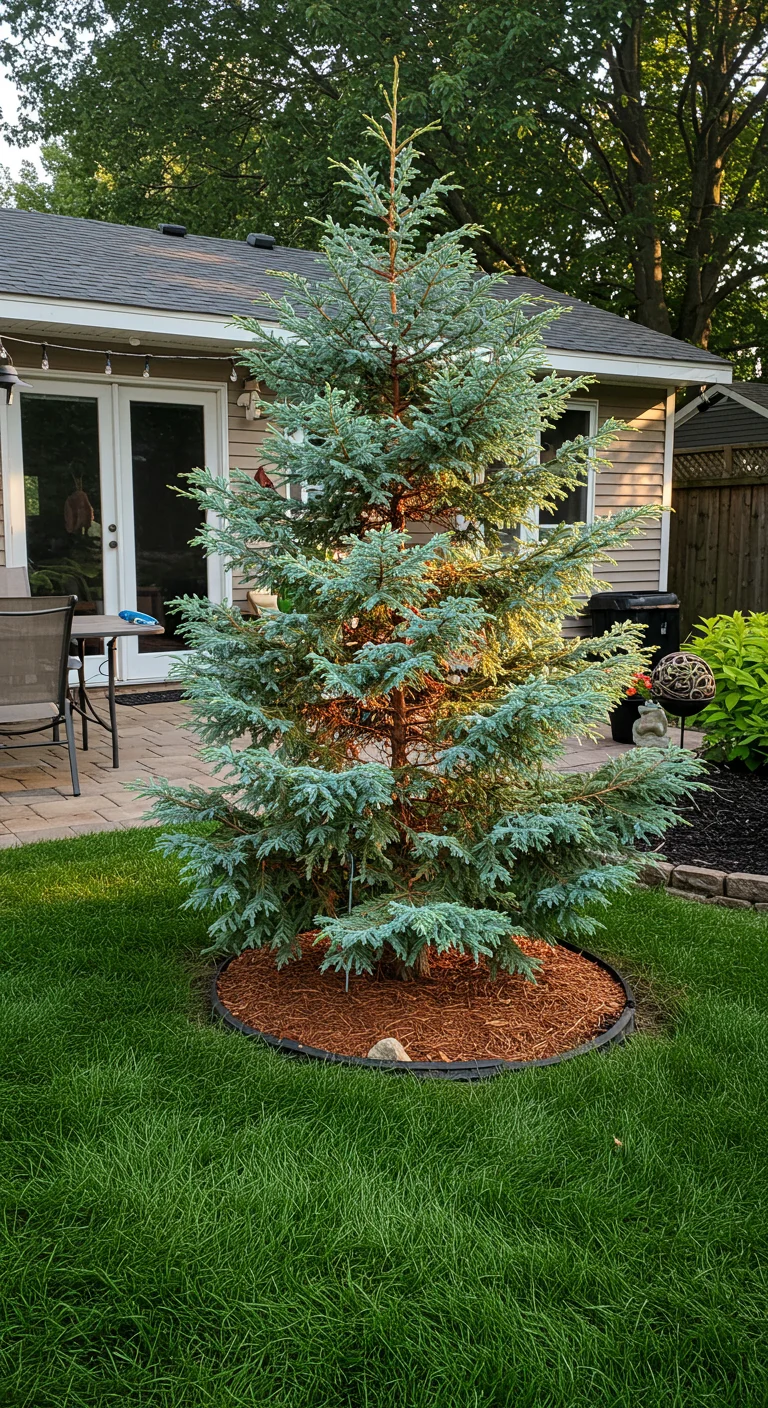
The Eastern Red Cedar (Juniperus virginiana) is an exceptional choice for homeowners seeking a small tree that offers both privacy and aesthetic appeal. This evergreen tree typically grows to about 15-30 feet tall with a spread of 8-20 feet, making it ideal for smaller yards. Its dense, aromatic foliage provides excellent coverage, creating a natural privacy screen that can shield your outdoor space from prying eyes. Additionally, the tree is low-maintenance and drought-resistant, thriving in various soil types while requiring minimal care once established. The Eastern Red Cedar also features attractive reddish-brown bark and blue-green foliage that changes color with the seasons, enhancing your landscape’s beauty year-round. Whether used as a standalone feature or as part of a privacy hedge, this versatile tree is a practical choice for any front or backyard.

